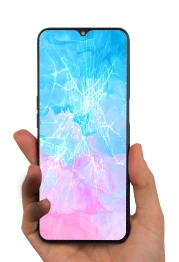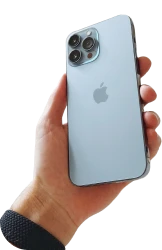MacBook Air Keyboard Replacement

Few laptop issues are as inconvenient as a damaged or malfunctioning keyboard. It’s nearly impossible to get through a task when one (or even worse – multiple!) keyboard keys aren’t working properly.
Unfortunately, keyboard complications have been frequent in later MacBook Air and MacBook Pro models. Most of these issues have arisen from Apple’s butterfly keyboard system, which is now discontinued on future products. However, current users are still stuck dealing with keyboard keys that are “sticky,” unintentionally repetitive, or not appearing at all.
If any of the above issues apply to you, it’s probably time for a MacBook Air keyboard replacement. Keep reading to learn about repairs costs, where to find quality service, and other general information. Also, check out our DIY guide to attempt a keyboard repair yourself!
Do I Need a Keyboard Repair or Replacement?
As we mentioned, most MacBook Air keyboard issues are a result of Apple’s butterfly system. Although you may only experience problems with a handful of keycaps now, it’s likely the damage will continue to grow, so a whole keyboard replacement could be in your best interest. However, it is possible to replace a single key, so if only one or very few are giving you trouble, this is certainly an alternative. It’s best to have your laptop professionally examined so you can decide whether it’s worth opting for the total replacement.
MacBook Air Keyboard Replacement Cost
It can be quite expensive – and not to mention, very challenging – to remove an old keyboard and replace it with a new one. When selecting a repair service, you have a handful of options available, so be sure to do your research to determine the best route for you.
Official Apple Store Cost
If you purchased a MacBook Air in recent years, you might qualify for Apple’s Keyboard Service Program, which was created in response to the backlash over their butterfly keyboards. Through this program, eligible devices are covered for a keyboard replacement free of charge. However, only the 13-inch MacBook Air Retina models released in 2018 or 2019 meet the requirements of this service program. Also, your laptop must undergo an examination to verify its eligibility.
DIY Repair Cost
You can find tools and replacement keycaps on Amazon, eBay, and other online retailers for around $20-$30. But, keep in mind the difficulty of performing a DIY keyboard repair. Often, at-home repairs are not handled properly, which can cause even more problems. It’s best to leave this job to the professionals, so you can avoid damaging your MacBook Air even further.
CPR Cell Phone Repair Cost
Many of Apple’s keyboards are not eligible for the keyboard replacement program. In those cases, CPR Cell Phone Repair is the best choice for fixing your MacBook Air. Our team of experts is well-versed in keyboard repairs and has serviced a wide range of Apple models. Your laptop is necessary for school or work, so you can’t afford to be without it for too long. CPR offers fast turnaround times and affordable MacBook keyboard repair service, so you can get back to using your laptop as quickly as possible!
Your Step-by-Step Guide to Repair a MacBook Air Keyboard
If you’re brave enough, you can fix your keyboard at home with the right tools and repair or replacement parts. However, please keep in mind that you must be extremely careful and fully understand the repair process to avoid causing even greater complications. Also, before you begin, you need to know which replacement keys or complete keyboard to purchase. This is dependant on the model you have, which can be identified here. You can find entire replacement kits with tools included, or you can purchase these items separately.
Steps:
- Make sure your MacBook Air is lying facedown.
- Remove the ten screws outlining the back panel.
- Once all screws are removed, remove the back panel.
- Pry the battery connector out of its socket. Then, bend the battery cables back and out of your way.
- Using tweezers, pull up the top adhesive to the right speaker enough to remove with fingers. Remove the adhesive strip from under the speaker.
- Pry underneath the right speaker cable with a spudger to disconnect the speaker.
- Repeat step 6 with the bottom adhesive to the right speaker.
- Lifting from the bottom up, remove the right speaker.
- Using tweezers, pull up the top adhesive to the left speaker enough to remove with fingers. Remove the adhesive strip from under the speaker.
- Pry underneath the left speaker cable with a spudger to disconnect the speaker.
- Repeat step 10 with the bottom adhesive to the left speaker.
- Lifting from the bottom up, remove the left speaker.
- There are three screws securing the audio board cable bracket. Remove screws with a screwdriver, then remove the cable bracket.
- Lift up the audio board connecter with a spudger, then remove the audio board.
- Lift up the Touch ID sensor connector with a spudger, then disconnect.
- Peel the black tape covering the fan cable connector. Lift up the locking flap on the fan cable.
- Remove the three screws securing your fan. Lift the fan out of the case.
- Remove screws securing the antenna cable bracket. Remove bracket.
- Pry under antenna cables near the connector. Then, remove two screws securing the cable connector bracket. Remove the display cable connector bracket.
- Pry up the display cable connector. Lift the antenna bar straight up and out of the case. Remove antenna bar.
- Remove six screws securing the display hinges to the upper case.
- With the MacBook still screen-side down, carefully lift the upper case to open the MacBook as far as possible.
- Lift the MacBook and carefully rotate the display to a 90-degree angle with the upper case.
- Remove six screws securing the Touch ID sensor and its bracket. Remove the Touch ID bracket.
- Turn the MacBook right-side up and open the display. Lift the Touch ID sensor out of its recess and remove it.
- Remove two screws securing the USB-C connector bracket. Remove the USB-C connector bracket.
- Pry the USB-C cable connector up and out of its socket on the logic board.
- Remove two screws securing the USB-C board. Remove the USB-C board.
- Remove two screws securing the trackpad connector bracket. Remove the trackpad connector bracket.
- Pry the trackpad cable connector up and out of its socket.
- Use a spudger to lift up the small locking flap on the soundboard cable’s ZIF connector. Slide the soundboard cable out of the ZIF connector.
- Remove six screws securing the logic board.
- Carefully slide an opening pick under the trackpad cable to separate the adhesive securing it to the upper case.
- Use the flat end of a spudger to lift the small locking flap on the trackpad ZIF connector. Slide the trackpad cable straight out of its connector.
- Separate trackpad cable adhesive. Carefully slide an opening pick under the trackpad cable to separate the adhesive securing it to the battery.
- Remove the nine screws securing the trackpad
- Carefully open the laptop and remove trackpad.
- Disconnect the trackpad cable. Use spudger to lift locking flap on trackpad’s connector. Slide cable out of connector.
- Remove four screws securing the battery.
- Using tweezers, pull up the battery adhesives on both sides enough to remove with your fingers. Remove the adhesive strip from under the speaker.
- With an opening pick, slice through adhesive secured to the upper case.
- Lift the locking flap on the microphone’s connector. Slide the microphone cable straight out of the ZIF connector.
- Separate microphone assembly cable from the adhesive securing it to the upper case.
- Use spudger to pry the microphones out of their recess in the upper case. Remove the microphone assembly.
- Remove two screws securing the USB-C port brackets. Lift the USB-C port brackets out of their recesses in the upper case and remove them.
- Release the display assembly from the upper case.
- Follow these steps in reverse to attach your new keyboard assembly to the upper case.
To ensure your MacBook Air keyboard is replaced properly, don’t hesitate to contact your local CPR Cell Phone Repair store. With fast turnaround and affordable pricing, you can get back to using your device as soon as possible!
MORE ON Microsoft Surface Pro 4
WHAT CUSTOMERS ARE SAYING
Chris Williams
They were very helpful in repairing my iPhone where the charger had broken off inside the phone.
Lulu lala
Fastest cellphone repair I ever been too!
Natalie Riley
Called CPR to see if they could fix my sons ps5, hdmi port had went out. We had previously put it in another shop in shreveport and they had it over a month and said that it could not be fixed. CPR got the ps5 and had it fixed and ready to be picked up in less than 24 hours. After the nightmare we went thru with the other shop. CPR made my son the happiest young man ever. Also they were so polite and well mannered 💯 recommend

